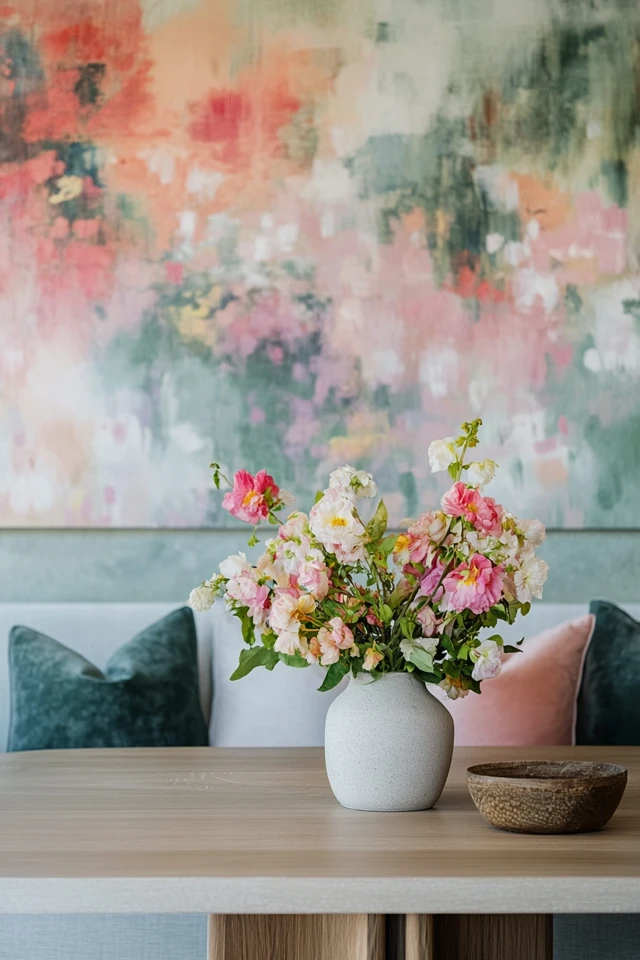Adding bold colors to your space can inject personality, energy, and style. But let’s be honest—working with bold shades can feel intimidating. Too much, and your room might feel chaotic; too little, and the impact gets lost. The key is balance.
I learned this the hard way. When I first experimented with bold colors, I went overboard with a bright orange wall and clashing decor. The result? A space that felt more chaotic than chic. After trial and error, I discovered how to incorporate bold colors subtly and intentionally, creating a room that felt vibrant yet harmonious.
In this guide, I’ll share actionable tips on how to embrace bold colors in your decor without overwhelming your space.
1. Start Small with Accessories
Why It Works
Accessories are an easy and low-commitment way to introduce bold colors without overpowering your room.
How to Do It
- Add colorful throw pillows or blankets to neutral furniture.
- Use vibrant vases, artwork, or table lamps as statement pieces.
- Incorporate bold patterns in small decor items like cushions or rugs.
Example:
A neutral gray sofa paired with mustard yellow pillows and a patterned blue throw adds just the right amount of boldness.
2. Use Bold Colors as Accents
Why It Works
Bold colors are most impactful when used sparingly, drawing attention to specific areas.
How to Do It
- Paint one accent wall in a bold shade while keeping the others neutral.
- Highlight architectural features like alcoves or moldings with a bright color.
- Add a pop of color through accent furniture, like a chair or side table.
Styling Tip:
A deep emerald green accent wall behind your bed instantly becomes a dramatic focal point without overwhelming the space.
Picture Gallery
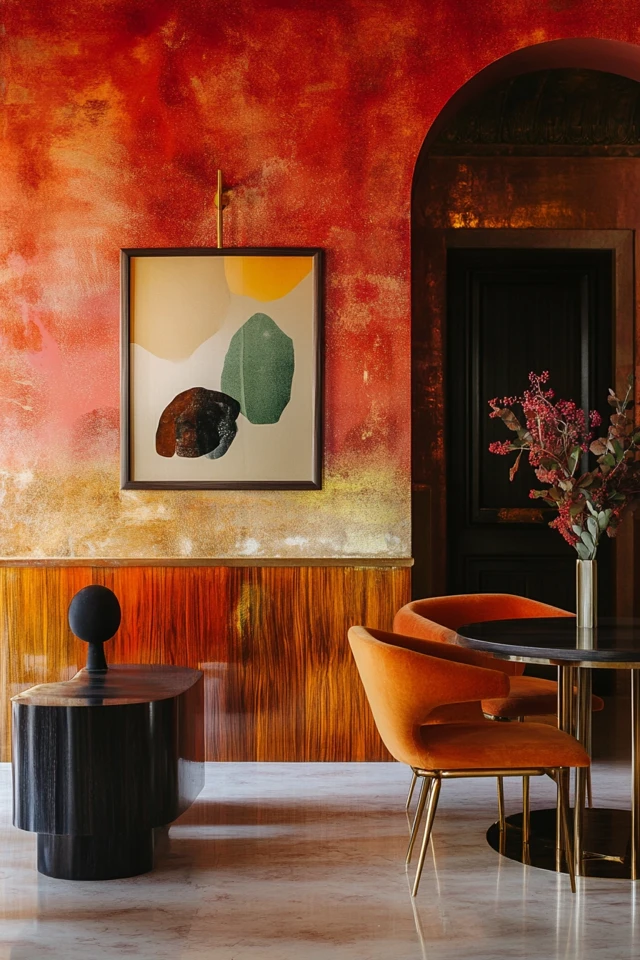
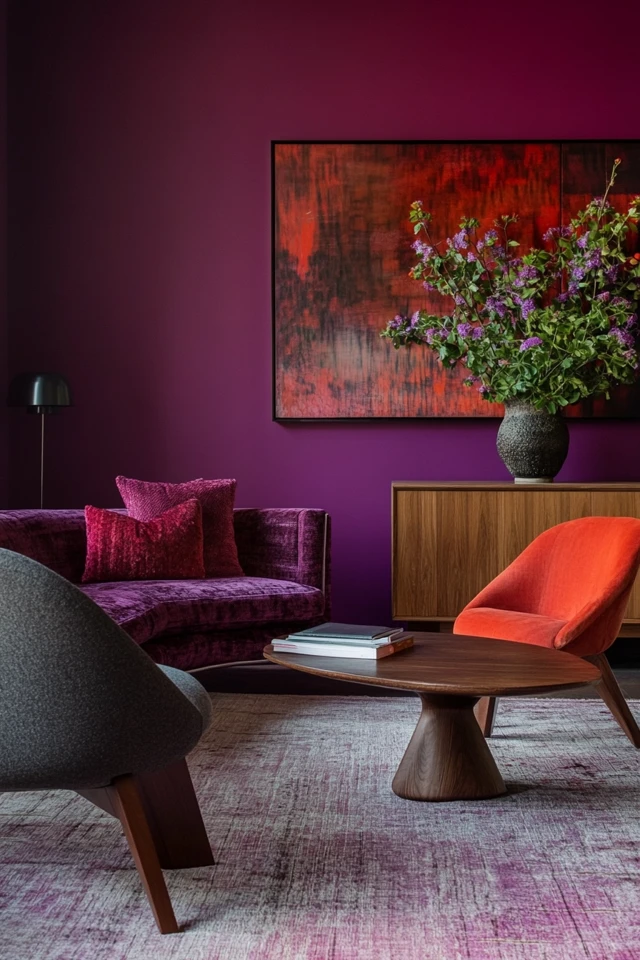
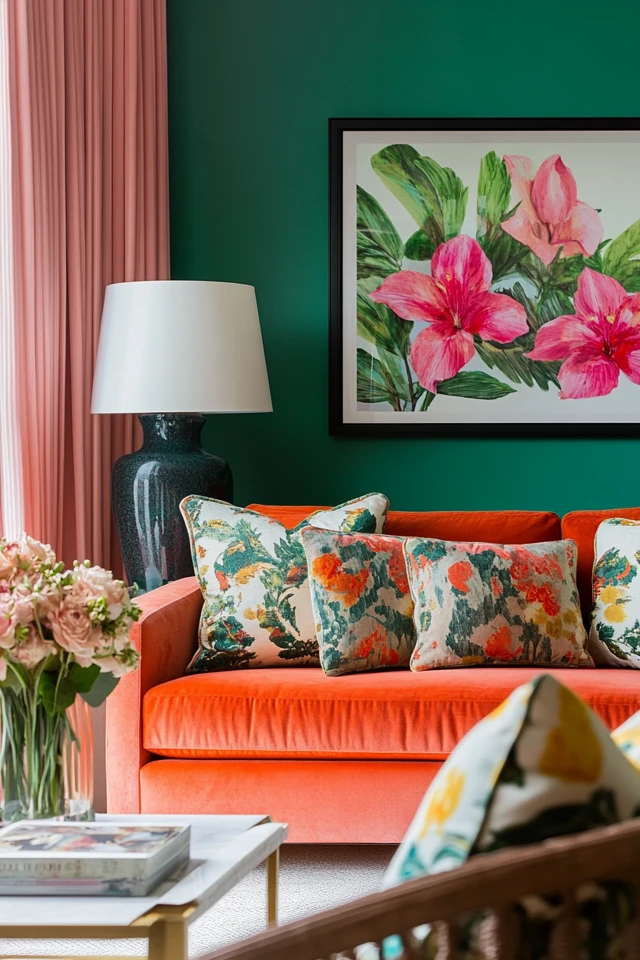
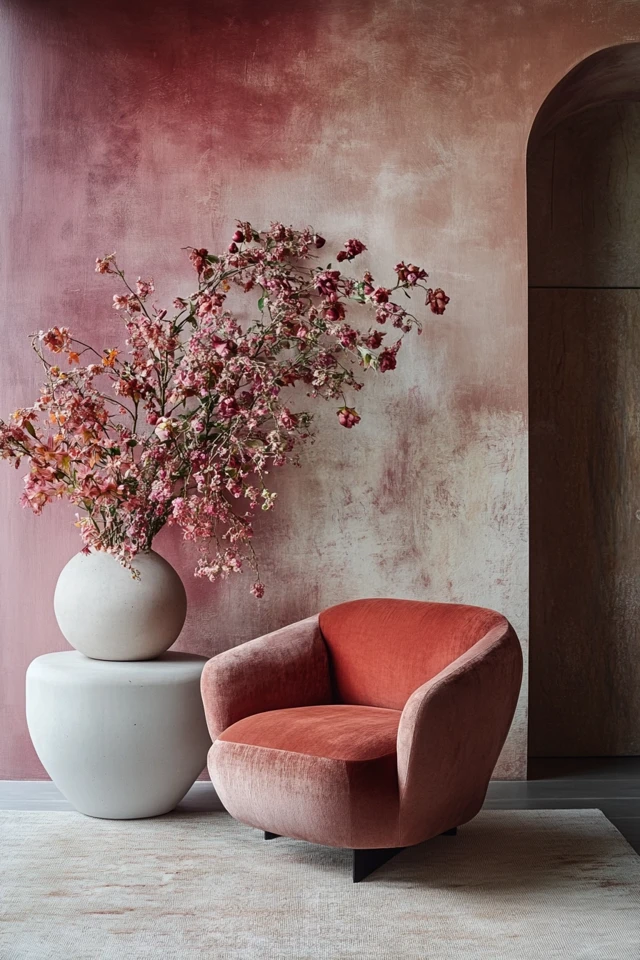
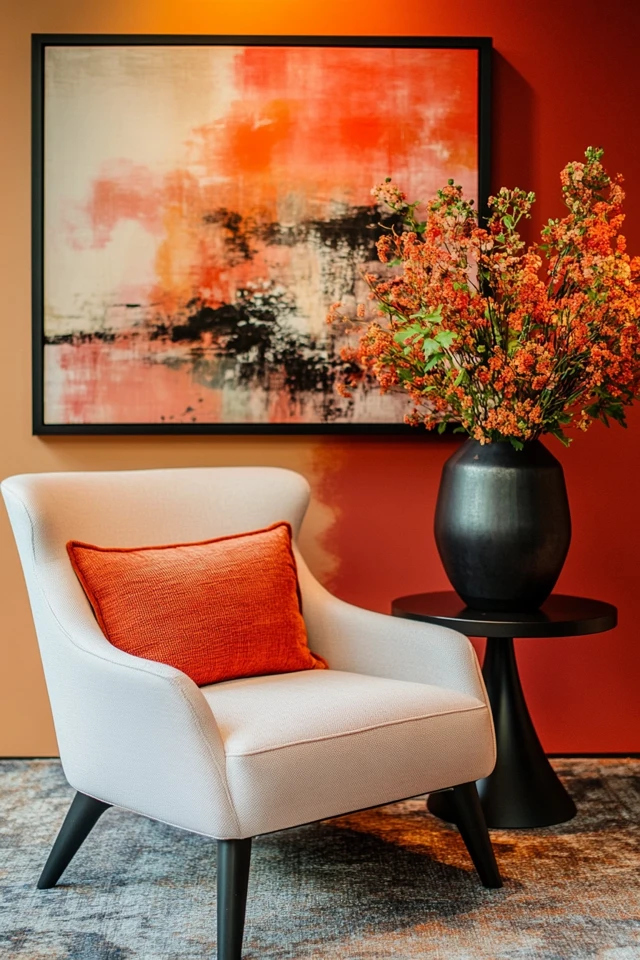
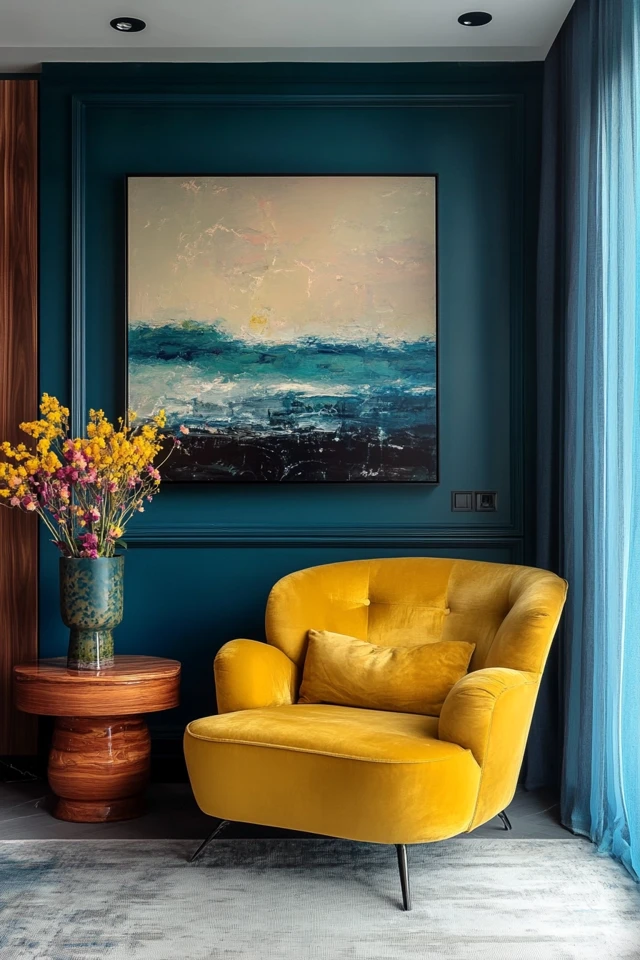
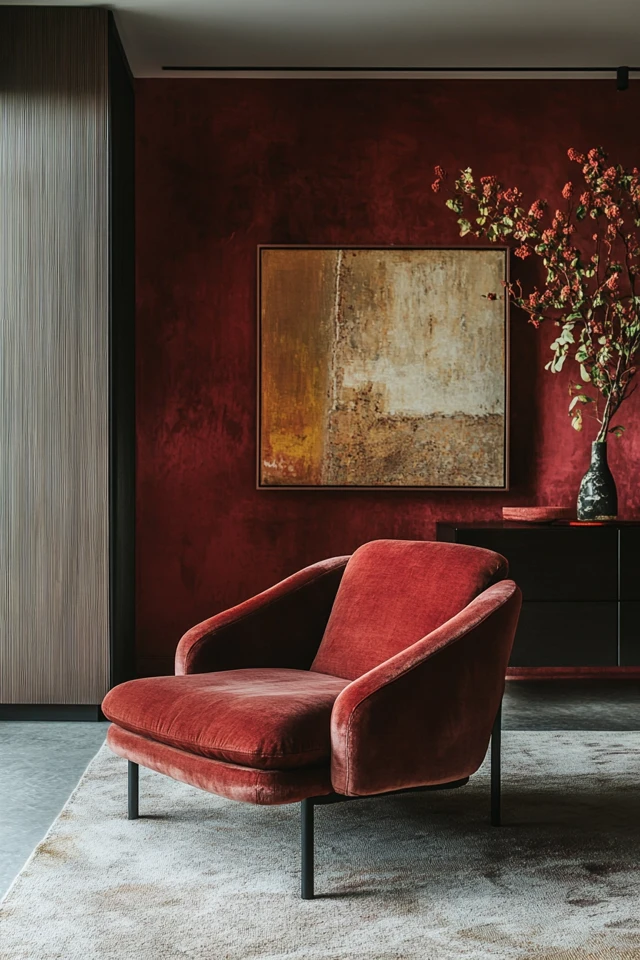
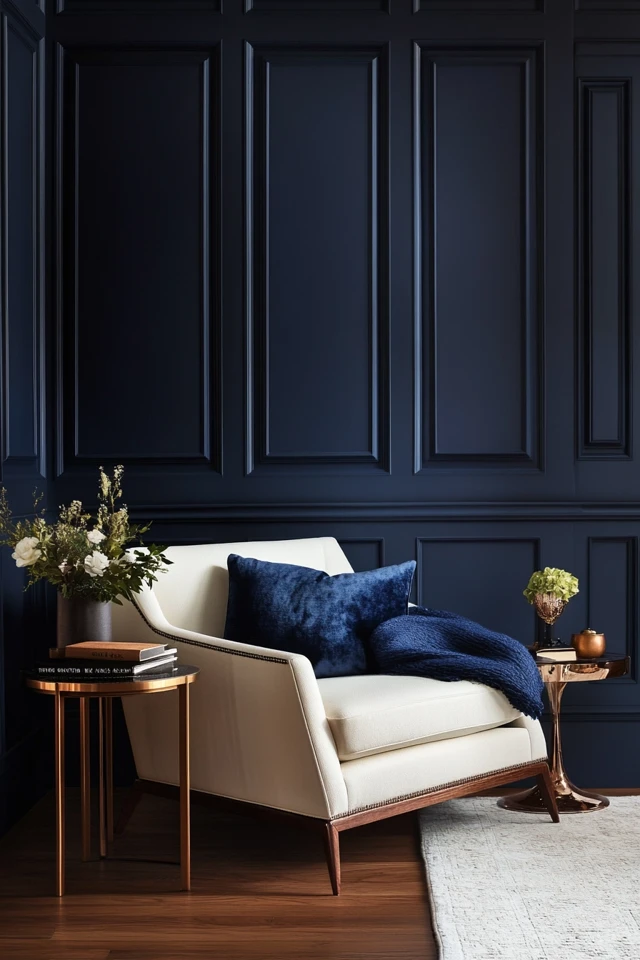
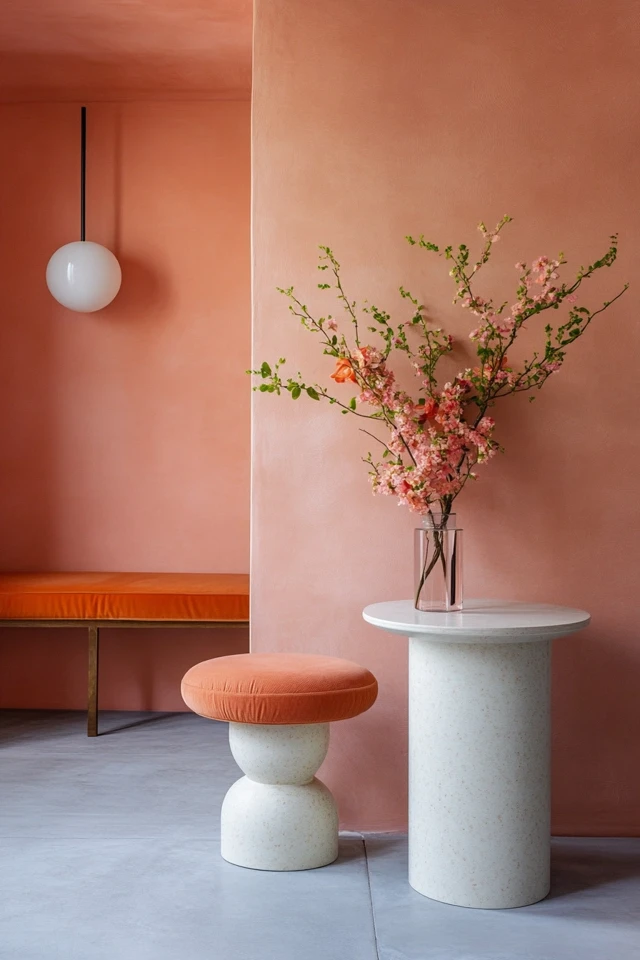
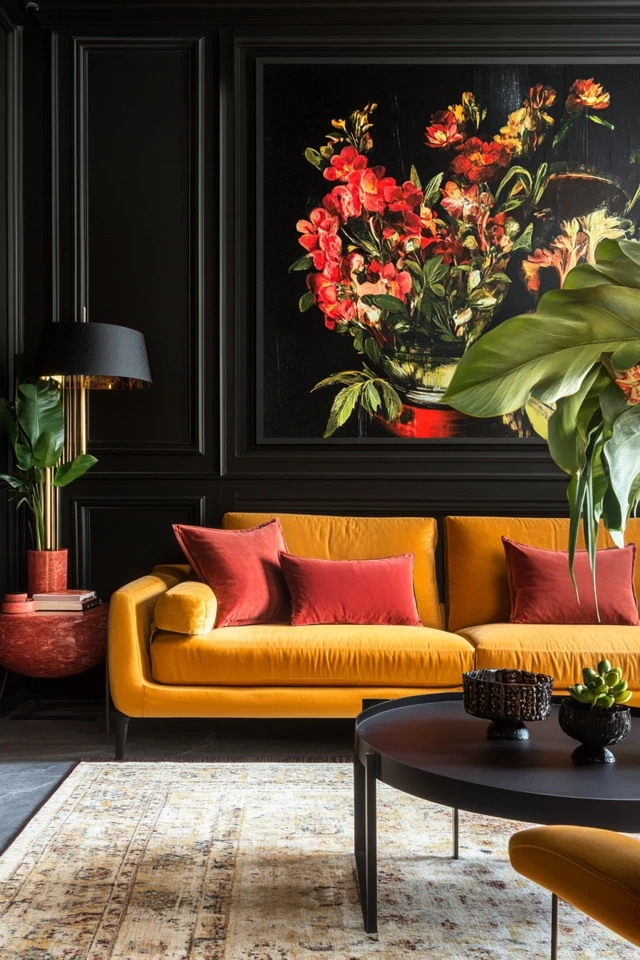
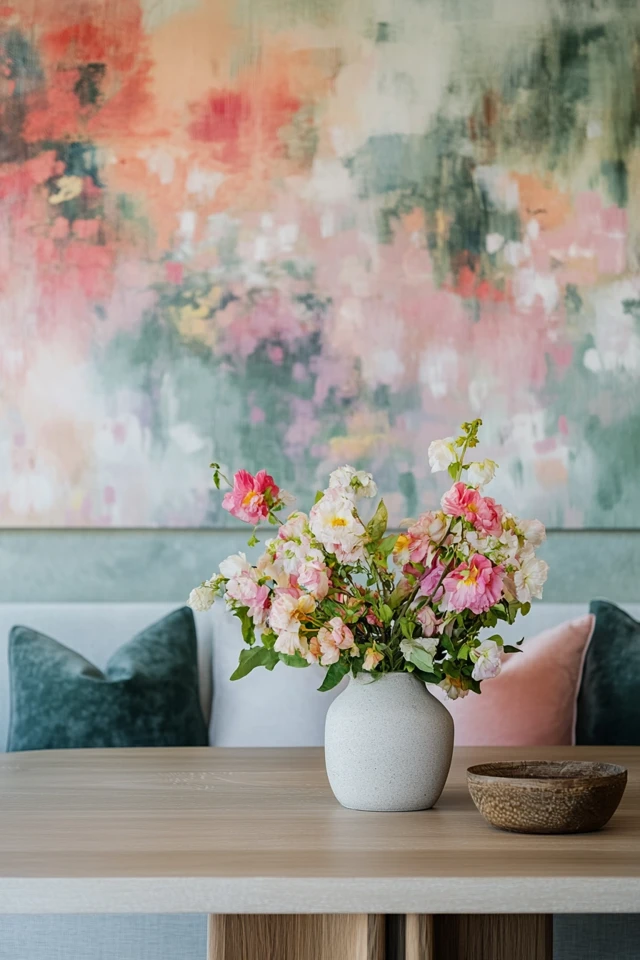
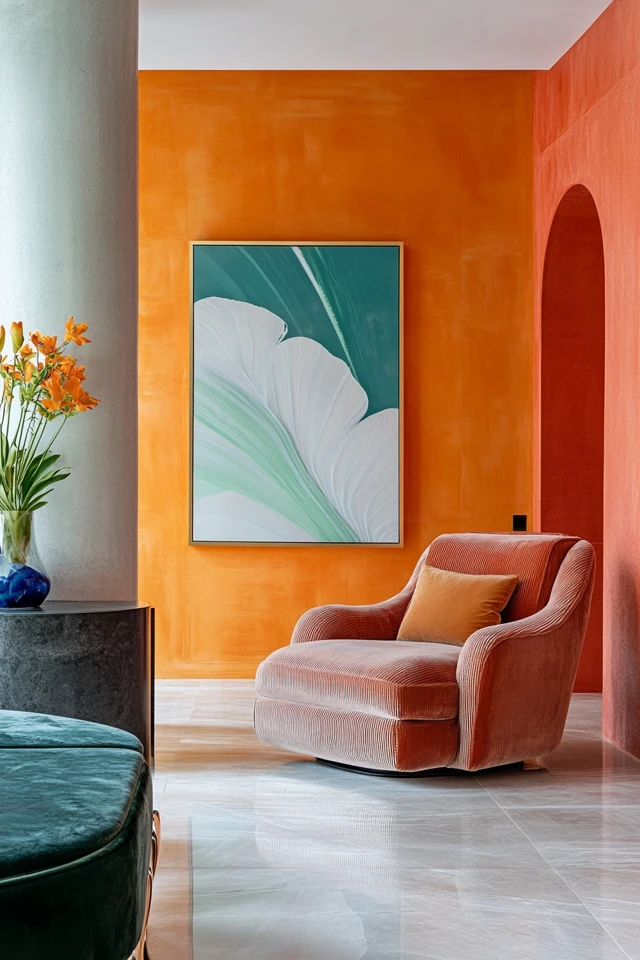
3. Balance Bold Colors with Neutrals
Why It Works
Neutral tones like white, beige, or gray provide a calming backdrop, letting bold colors shine without competing.
How to Do It
- Pair a bold sofa or chair with neutral walls and flooring.
- Use white or gray bedding with colorful cushions or throws.
- Opt for neutral curtains to balance brightly painted walls or colorful furniture.
Example:
A navy blue velvet armchair looks striking in a room with white walls and natural wood flooring.
4. Incorporate Color Through Art
Why It Works
Bold artwork adds personality and vibrancy while being easy to switch out or move.
How to Do It
- Choose large-scale artwork with bright, eye-catching colors.
- Create a gallery wall with a mix of bold and muted prints.
- Use one oversized, colorful piece as the focal point of the room.
Styling Tip:
A bright abstract painting above a neutral sofa ties the room together while adding a pop of color.
5. Use Color in Functional Pieces
Why It Works
Functional items like furniture or lighting can bring bold colors into your space without feeling like “extra decor.”
How to Do It
- Choose a brightly colored coffee table, armchair, or bar stools.
- Opt for colorful pendant lights or lampshades.
- Incorporate colorful kitchenware, like a bold kettle or toaster, for a cheerful kitchen vibe.
Example:
A cobalt blue dining chair set around a wooden table creates a dynamic yet balanced look.
6. Experiment with Textiles
Why It Works
Textiles like rugs, curtains, and upholstery are an excellent way to introduce bold patterns and colors.
How to Do It
- Use a bold area rug to anchor the space.
- Opt for curtains in a bright hue to frame windows and add drama.
- Reupholster chairs or cushions with vibrant, patterned fabrics.
Example:
A bright red geometric-patterned rug makes a statement in an otherwise neutral living room.
7. Create Contrast with Dark Tones
Why It Works
Pairing bold colors with dark, moody tones like black or charcoal gray creates a dramatic, high-end look.
How to Do It
- Use black furniture or frames to ground bright colors like orange or yellow.
- Paint a bold wall color and add dark accents, like a black pendant light.
- Choose a jewel-toned sofa and pair it with dark wood furniture.
Styling Tip:
A teal sofa paired with black side tables and gold accents creates a sophisticated and bold living space.
8. Layer Bold Colors with Soft Textures
Why It Works
Adding soft textures helps tone down the intensity of bold colors, making them feel more inviting.
How to Do It
- Pair bold-colored velvet cushions with a knit throw.
- Add a brightly colored ottoman in a soft fabric like suede.
- Use a bold duvet cover and layer it with neutral or textured throws.
Example:
A fuchsia velvet cushion paired with a chunky knit throw balances vibrant color with cozy texture.
9. Incorporate Bold Patterns
Why It Works
Patterns, especially in bold colors, add visual interest without overwhelming the room.
How to Do It
- Use patterned wallpaper on a single wall for a dramatic effect.
- Incorporate patterned cushions or curtains in bold tones.
- Pair bold patterns with solid-colored furniture to keep the look cohesive.
Styling Tip:
A geometric yellow-and-gray wallpaper behind a neutral headboard adds character without feeling too loud.
10. Stick to a Cohesive Color Scheme
Why It Works
Limiting your palette to a few complementary colors ensures that bold hues feel intentional, not chaotic.
How to Do It
- Choose one or two bold colors and repeat them in different elements throughout the room.
- Pair bold colors with complementary or analogous shades for a harmonious look.
- Use an online color wheel to find colors that work well together.
Example:
A room with teal accents, mustard pillows, and navy blue curtains feels vibrant yet cohesive.
How to Maintain Balance with Bold Colors
- Start Small: Begin with accessories or a single accent wall before committing to larger changes.
- Test Colors First: Use paint swatches or fabric samples to see how the color looks in different lighting.
- Pair with Neutrals: Let bold colors stand out by surrounding them with muted tones.
- Layer Wisely: Use patterns, textures, and complementary colors to create depth and balance.
- Refresh Seasonally: Rotate bold accessories or textiles seasonally for a fresh and dynamic look.
Conclusion
Incorporating bold colors into your decor doesn’t have to feel overwhelming. By starting small, balancing them with neutrals, and using them strategically in furniture or accessories, you can create a space that feels vibrant and sophisticated.
When I embraced bold colors in my home, I found that even a single bright accessory—like a cobalt blue chair or a sunny yellow throw—brought new life to my room. The key is to experiment and find what feels right for you and your space.
So, take these tips, add your personal flair, and let bold colors transform your home into a lively, stylish haven.
FAQ
What are the best bold colors to use in a room?
Jewel tones like emerald green, navy blue, and ruby red are timeless choices. Bright shades like mustard yellow or teal can add a modern touch.
How do I use bold colors without making my room look busy?
Stick to one or two bold colors, pair them with neutrals, and avoid cluttering the space with too many patterns.
Can I mix bold colors with patterns?
Yes! Use bold patterns sparingly on accessories like cushions, rugs, or wallpaper, and balance them with solid colors.
What if I’m nervous about using bold colors?
Start small with accessories or a single accent piece, like a colorful throw or lamp, to test how you feel about the color.
Where can I find bold-colored decor?
Try stores like West Elm, Anthropologie, CB2, or IKEA for bold and stylish furniture and decor options.

